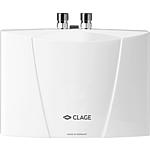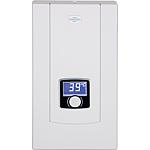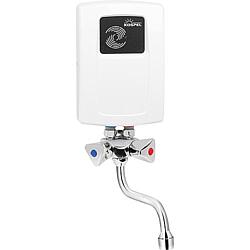0
WATCHLISTS
You must login before you can use the watchlist functions.
0
BASKET
You must login before you can use the basket functions.
Category
- New in Range
- Heat generator
- Tank, freshwater stations
- Exhaust gas systems
- Pumps
- Heating circuit sets, Manifolds
- Safety devices, cutters
- Mixers, Deaerators, Preparation
- Heat output
- Control Technology, thermostats
- Solar technology, geothermal energy
- Oil installation
Would you like to limit our huge product range? It’s very straightforward now with our new filters.
Search
Quick water heating with electricity
Electric heating of water using the continuous flow principle is a proven principle that has been used in domestic installations for a long time. Back in the 1920s, the Stiebel Eltron company manufactured the first small instantaneous water heaters with multi-stage technology. Technology has developed steadily since then. Modern and electronically controlled appliances can often be pre-set with degree accuracy to the desired temperature, and work particularly efficiently using new types of heating elements. This means that an electronic instantaneous water heater requires considerably less electricity than a hydraulically controlled model.
Unlike other water heating devices, the water in electric instantaneous water heaters is exclusively heated in the flow. If a connected outlet fitting is opened, the device switches on automatically. This provides various advantages compared to hot water appliances in which a larger quantity of hot water is stored.
Different models for different applications
Depending on the intended application and the number of tapping points and the respective installation conditions, there are various types of instantaneous water heaters that can be considered for installation. As well as high-performance devices for wall mounting, depressurised and pressure-resistant variants for under-table and over-table mounting are available.
Pressure-resistant units are available both as small instantaneous water heaters for a single connected tapping point and in more powerful models for supplying a shower or for group supply. This type of instantaneous water heater can also supply the bathroom or kitchen with hot water without any problems, even if there are several tapping points.
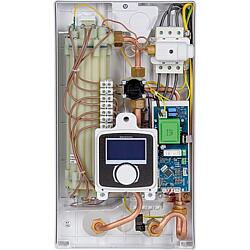 |
While low-power small instantaneous water heaters are connected to 230 V AC with a plug, units with a higher rated output require a fixed connection to the mains supply.
Powerful units for supplying different tapping points are operated over several phases with 400 volts. The high connection values require a suitably designed electrical installation with sufficient conductor cross-sections. If old devices with surface-mounted piping are being replaced by a modern version of the water heater, a suitable conversion kit can be used. |
With the increasing use of solar water heating, instantaneous water heaters have another area of application. The devices are often used in this context for roof heating of hot water that was previously heated by solar thermal energy. On days with little sunshine in particular, solar systems are sometimes unable to provide the required temperatures. In this case, it may be necessary to reheat the solar-heated water. This can be achieved completely independently of an existing heating system by using a solar system-compatible instantaneous water heater.
Assembly and installation
If only one cold water connection is available, individual tapping points can be supplied with hot water quickly and cost-effectively with instantaneous water heaters. This also applies, for example, to hand basins and sinks in workshops or laundry rooms, as well as to guest toilets or washrooms in retail outlets, offices or restaurants.
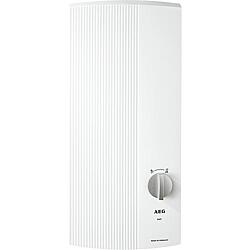 |
There are various types of small instantaneous water heater which can be used to supply a single water point, for example at a washbasin or kitchen sink. Depending on the design, the devices are equipped with a normal earthed plug, which makes connection much easier. However, the power supply and fuse protection must be designed for the corresponding connected load.
Installing a unit for over-counter mounting is ideal if the water connection is above the washbasin in the wall. These devices have an integrated fitting, and are usually available as a depressurised version. Devices for under-counter installation, however, can be installed below the washbasin or in the sink cabinet to save space. Under-counter units are available in both pressure-resistant and depressurised versions. |
The pressure-resistant version of the units has two connections with a screwed connection. The input connection is connected directly to the cold water inlet, for example with a T-piece or by means of a suitable mounting set. After installation, the unit is permanently pressurised, which allows connection to a normal single-lever mixer.
Depressurised versions of instantaneous water heaters are connected via an existing low-pressure fitting with three connections or one that needs to be installed. The two connections of the depressurised small instantaneous water heater are connected to the fitting only, but not directly to the water supply. This is connected to the third connection of the outlet fitting instead. When the fitting is opened, water flows from there through the water heater and via the second connection back to the outlet of the fitting.
Products |
